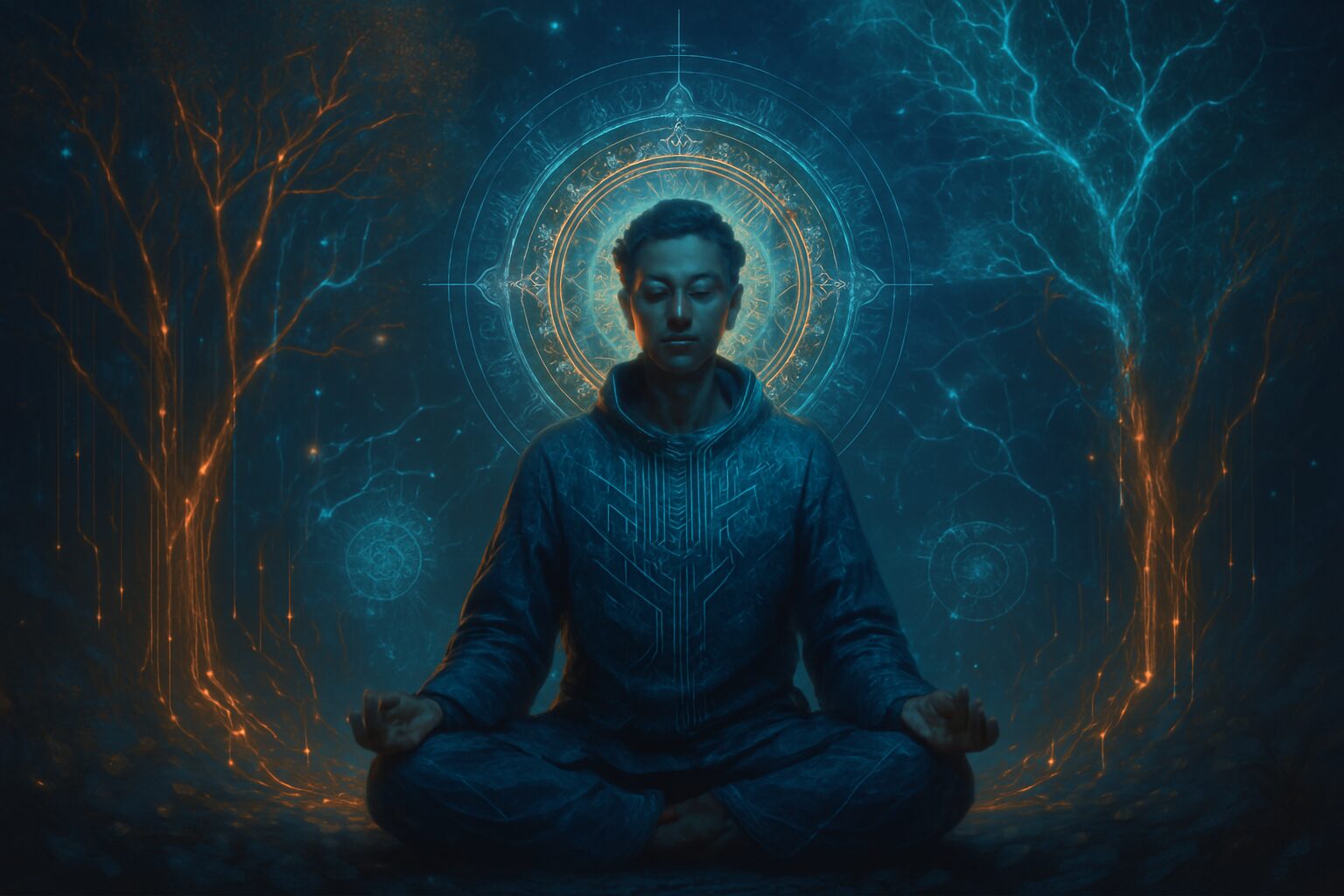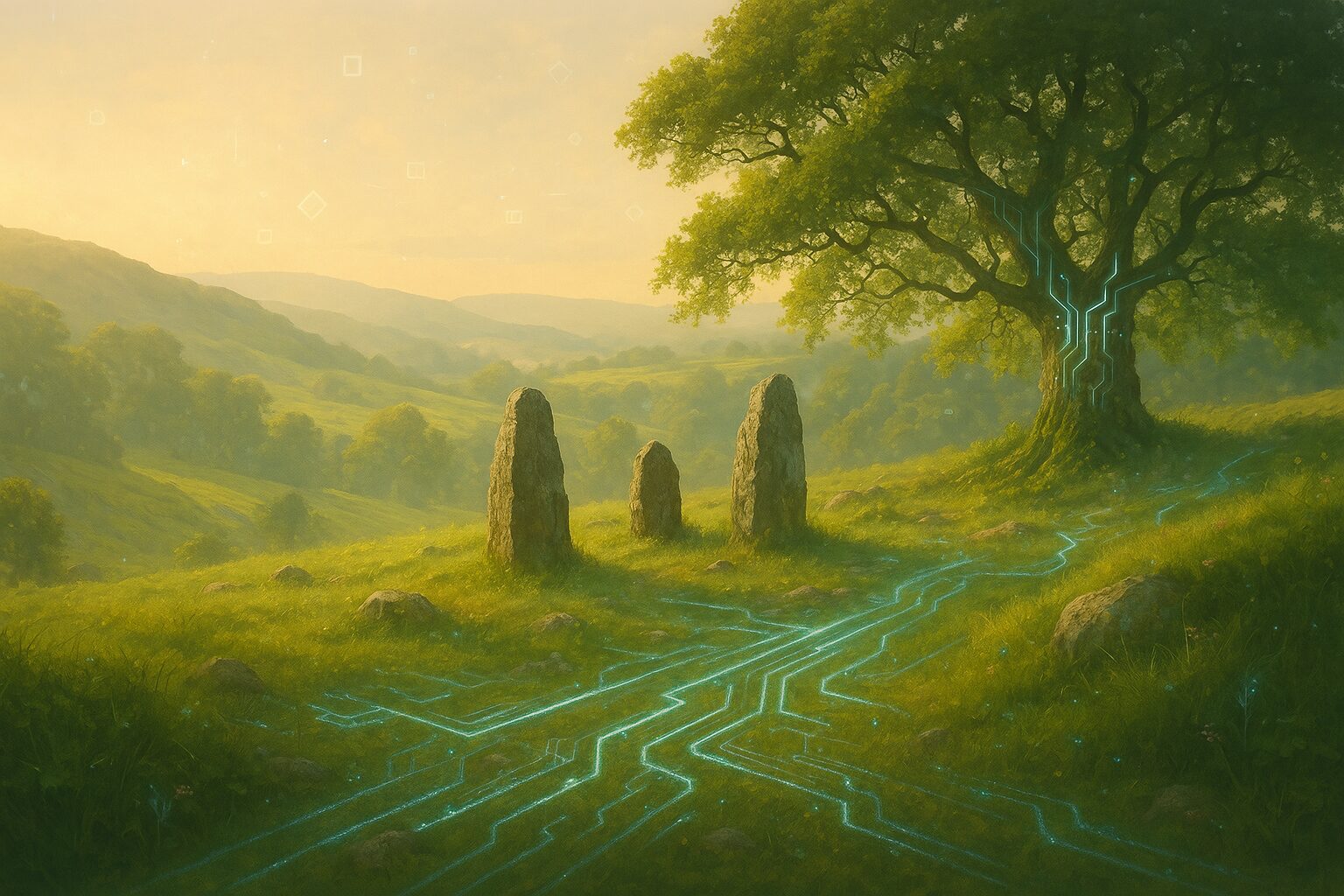“The mind no longer needs a jungle or a desert to dream. It needs a signal.”
I. The Sacred Shift: From Plants to Processors
For millennia, humanity has sought altered states of consciousness — through fasting, meditation, dancing, prayer, chanting, and sacred plants. These were more than techniques; they were portals, ways to pierce the veil and access divine strata of the self.
Today, that longing hasn’t vanished — it’s evolved.
We now reach for headphones instead of ayahuasca. We close our eyes not around a fire, but under the glow of a guided meditation app. We trigger bliss states with algorithms, not incense.
Have we diluted the sacred? Or simply digitized it?
II. The Rise of the Neuro-Mystic
A new figure emerges on the frontier: the neuro-mystic — part spiritual seeker, part hacker of consciousness. Their shrine is a VR headset. Their prayer beads are biometric sensors. Their mantra is a binaural beat set to theta waves.
They seek not escape, but expansion — a recalibration of perception through engineered stimuli. Devices are not distractions; they are tuning forks for awareness.
“Where ancient initiates used drums, the modern seeker uses code.”
III. Digital Psychedelics: Hacking the Divine
Modern tech offers a new psychedelic palette:
- Binaural Beats: Frequencies tuned to brain states, guiding you toward lucid dreams or meditative stillness.
- VR Meditation Realms: Immersive landscapes built to simulate astral planes or archetypal journeys.
- AI-guided Journeys: Generative music and visuals that respond in real-time to your biometrics, mood, or intention.
- Wearable Tech: From EEG headbands to haptic suits, the body becomes the altar — wired for transcendence.
Each is a digital sacrament — a tool not to replace the sacred, but to offer new doorways to it.
IV. Synthetic or Sacred?
Some spiritual traditionalists reject these tools as inauthentic. Real awakening, they argue, must come from within — unmediated, earned, slow.
But mystics have always adapted the tools of their age. The printing press, once profane, spread sacred texts. The internet became the new temple. And now, the chip is the new censer.
The question is not whether the tool is sacred.
The question is: what intention flows through it?
V. The Ethics of Ecstatic Design
With great power comes great subtlety. Not all altered states are equal. Some can liberate; others can entrap.
Designing tools for transformation raises critical questions:
- Is the experience deepening awareness, or numbing it?
- Is the seeker empowered, or made dependent?
- Is the tool open-source and transparent, or commodified and addictive?
True technosacred design honors the agency of the user and the integrity of the state being invoked.
VI. A New Digital Mysticism
This is the dawn of Wired Nirvana — a strange, glowing lotus rising from the circuitry. It is not the end of ancient practice, but its expansion into the electronic age.
To alter the mind is to touch the threshold of the divine.
Whether it’s breath or binary that takes you there matters less than this:
Do you remember who you are — when you arrive?
ZionMag Verdict:
Not all sacred is ancient. Not all awakening requires incense.
Some initiations hum at 528Hz. Some temples are made of light and logic.
In the digital age, the divine still whispers.
And now, we finally have headphones to hear it.

